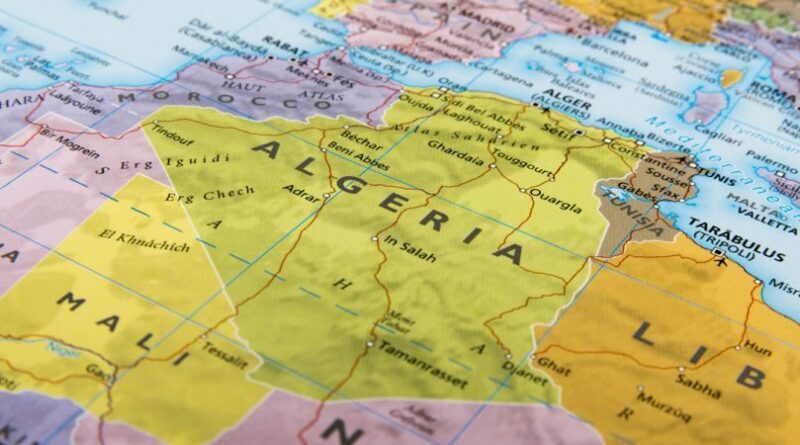Economic Development Inequality in North Africa
North African countries, including Libya, Tunisia, Morocco, Algeria and Egypt, have been known to share almost similar economic development experiences for the last decade. For instance, similar concerns about inequality and poverty have dominated their political economic debate. We therefore seek to discuss features of inequality and poverty in respect to economic development in this region.
First of all, it is necessary that we review the economic development strategies among these countries, which as we have stated, seem to bear a great degree of similarities. However, these countries have a diverse set of natural resource endowments. According to the World Bank 2005 economic survey of the region (2008), Morocco and Tunisia were classified as resource-deficient, labor abundant and emerging economies; Algeria has a rich supply of resources, labor-abundant and a transitional economy; whereas Libya is classified as resource-rich and labor-importing economy. In spite of the relative differences in resource endowment, these countries adopted similar strategies for economic development at the time of independence in order to correct poverty and inequities created during the colonial era. Economic planning was therefore defined by social objectives, with the public sector empowered to produce marketable goods, and policies for redistribution of wealth and equity. This was not until the recent civil unrest in the region that had an adverse effect on the economic growth projections. For instance, in Libya, oil output was cut to almost zero, contracting an oil-dependent economy by 41.8% in 2011.
The first feature of inequality in the Northern African region is the inequality in income or consumption. Most of the Arab African countries, including the region of study, have a similar pattern of income inequality. According to the Arab Human Development Report (2009), 20% of the richest in Morocco and Tunisia absorb almost 50% of the national income, as compared to less than 6% of the poorest who account for 20%. This is a worse scenario when we consider the income distribution indices as proposed by the United Nations. Algeria, Egypt, morocco and Tunisia are said to have unacceptable inequality in the share of income, which has a negative influence on economic growth and social services provision. In other words, no economic development can be sustained by a country with such rates of unfair inequalities. With unequal distribution of income, even if a country’s Gross Domestic Product is high, the per capita income will be significantly low as huge incomes of the few rich will be distributed among the poor majority and hence creating a discrepancy between GDP and per Capital.
Secondly, there is also inequality in education and literacy in the region. The launch of the Millennium Development Goals saw the North African region improve in the primary education enrolments for both boys and girls (2000). Algeria, Egypt and Tunisia recorded an improvement of about 75% with minimal disparities between male and female enrollments. However, morocco recorded a higher number of males enrolling as compared to the females. In Egypt, one out of five children lives in absolute poverty, a quarter of children are deprived of one or more of welfare dimensions. Although these countries have shown devotion in reducing the rate of illiteracy in the past five decades, the problem of illiteracy remains a burden to regional economic growth. For instance, there exist inequalities in literacy between the urban population and the rural population. In morocco, urban males are 5 times likely to be literate than rural females.
Lastly, there is inequality in the provision of better healthcare in the North African region. In morocco, the ratio of rural population to a physician is 6300:1, as compared to the urban population, for instance in Rabat the capital city where the ratio is380 to one physician (UNDP, 2009). These figures are closely related to Egypt and Tunisia. In Libya, socioeconomic factors have increased the disparity between rural and urban healthcare provision, with rural areas experiencing higher rate of stunted growth among infants. A poor woman in morocco is seven times unlikely to get antenatal care than a rich woman. Although the former Libyan government, led by Muammar Gaddafi, pursued policies based on gender sensitivity, a little success has been achieved in promoting equitable distribution of resources. Social and cultural norms have been at forefront in hindering accessibility of women to finance and ownership of land. Unhealthy population can not actively participate in economic activities. Besides, funds that would otherwise be used in economic development through the multiplier effect are diverted for medical attention.
The international community has been at the forefront in initiating projects so as to raise awareness and minimize inequalities in provision of social services. Bodies like the United Nations Development Fund (UNDP) have been engaged in starting up projects that would create employment opportunities thereby reducing income disparities between the rich and poor. Similarly, the World Health Organization has engaged in partnership with healthcare providers to improve healthcare in rural areas and also increase accessibility to healthcare facilities. Involvement of the regional countries in international trade agreements and tariffs like the Great Arabs Free Trade area (GAFTA) and the Arab Maghreb Union (AMU) has led to integration of the region and increased trade among the member states. This has led to reasonable improvement in the provision goods and services, although inequality in distribution of these commodities still exists.
Economic Development
Land
Land is a natural factor of production. In Libya, only about two percent of the total land is arable, four percent can be used for grazing while the rest is useless desert. Land reform program began in 1970s after Gaddafi ascended to power. Italian-owned lands were confiscated and redistributed to Libyans; although the government retained some quantity for state farming ventures (Barker, 1998). A law was enacted in 1977 that restricted tribal ownership of land, stipulating that land would be allocated for actual usage. Families were therefore allocated just enough land for sustenance.
Since most of cultivation in Libya is based on irrigation, inefficient utilization of water led a decrease in the amount of available water for long-term sustenance. In an effort to address this issue, the government initiated the GMMR project in 1983. The first phase of the project would ensure conveying water from Sarir and Tazirbu to Surt and Benghazi for agricultural production and domestic use. This water was expected to irrigate 20,000 hectares of vegetables, 50,000 hectares of cereals and raise 100 heads of cattle.
Despite heavy investments in land for agricultural production by the government, the success has been limited as its contribution to the national economic growth has been marginal. In 1998, only 207,000 metric tons of cereals were produced, sufficient for only 15% of the country’s demand (Barker, 1998). Land use for agriculture has marginally contributed to work-force; only 17% of the labor force was employed by the sector in 1997, while contributing to GDP by 5.6%. Rapid urbanization has contributed to the shortage of farm laborers, which has forced the country to depend on foreign laborers. Livestock production in Libya has been hampered by sanctions that have limited animal feed imports. For instance, beef production dropped to 2,100 metric tons in 1998 from 22,100 in 1994.
Labor
The structure of the Libyan population did not correspond to its labor supply by 1995. Participation of women in the labor market was lower than that of men. The, labor force is heavily distributed in service sector at 54%, 17.9% in agriculture and the rest in industry (CBL, 2001). The rapid growth in the country’s economy attracted migrant labor mainly from Arabian countries, and African and Asian countries to a lesser extent. As a result of increased economic activities accelerated by oil exploration, more and more of immigrant laborers were attracted to Libya. The non-Libyan labor force has rapidly increased and participates most of the economic activities, although domestic labor force mainly participated in the public sector. The government policy of improving educational system however led to a decline in the rise.
With the former revolution experienced in Libya, leading to a change in governance, a skilled labor force and an efficient human labor market will be needed for economic development. Transforming the economy back to its position and beyond it will require a workforce with new expertise, given the fact that the country experienced capital flight including human capital. In order for the government to meet this demand, training programs for workers and job seekers should be initiated.
Capital
The capital base of a country is the total amounts of assets that a country is endowed with. According to the World Bank report (2008), Libya’s gross capital formation was in excess of $25 billion by 2008. Gross capital formation, also known as gross domestic investment, includes additional outlays on fixed assets of the economy and the net changes in inventories. The same report indicates that the gross capital formation as a percentage of Gross Domestic Product was 27.9%. This figure was high as compared to the 2005 value of 9.9%. The value is expected to drastically reduce, especially after the recent unrest experienced.
Policies should be put in place so as to attract capital back into the country. Political instability led to capital flight from the country as investors ceased their operation due to increased risks. The move by the western nations to freeze the country’s foreign accounts also adversely affected capital mobility in the country. Therefore, for the economy to pick-up, there should be economic stimulation initiatives, including assurance of security to investors. This will attract the much needed highly skilled human capital into the country.
References
Barker, P. (1998). Development of the Libyan industry. Croon Helm Publisher, London.
Central Bank of Libya. (2001). Research and statistics department: Economic Bulletin second quarter 2001. Al-Ezdehar press, Misurata.
UN. (2000). United Nations Millennium Development Declaration. New York, NY, United Nations.
UNDP. (2009). Challenges to Human Security in the Arab countries. Arab Human Development Report.
World Bank. (2008). Unlocking the Employment Potential in the Middle East and North Africa: Toward a New Social Contract. MENA Development Report. World Bank, Washington.




